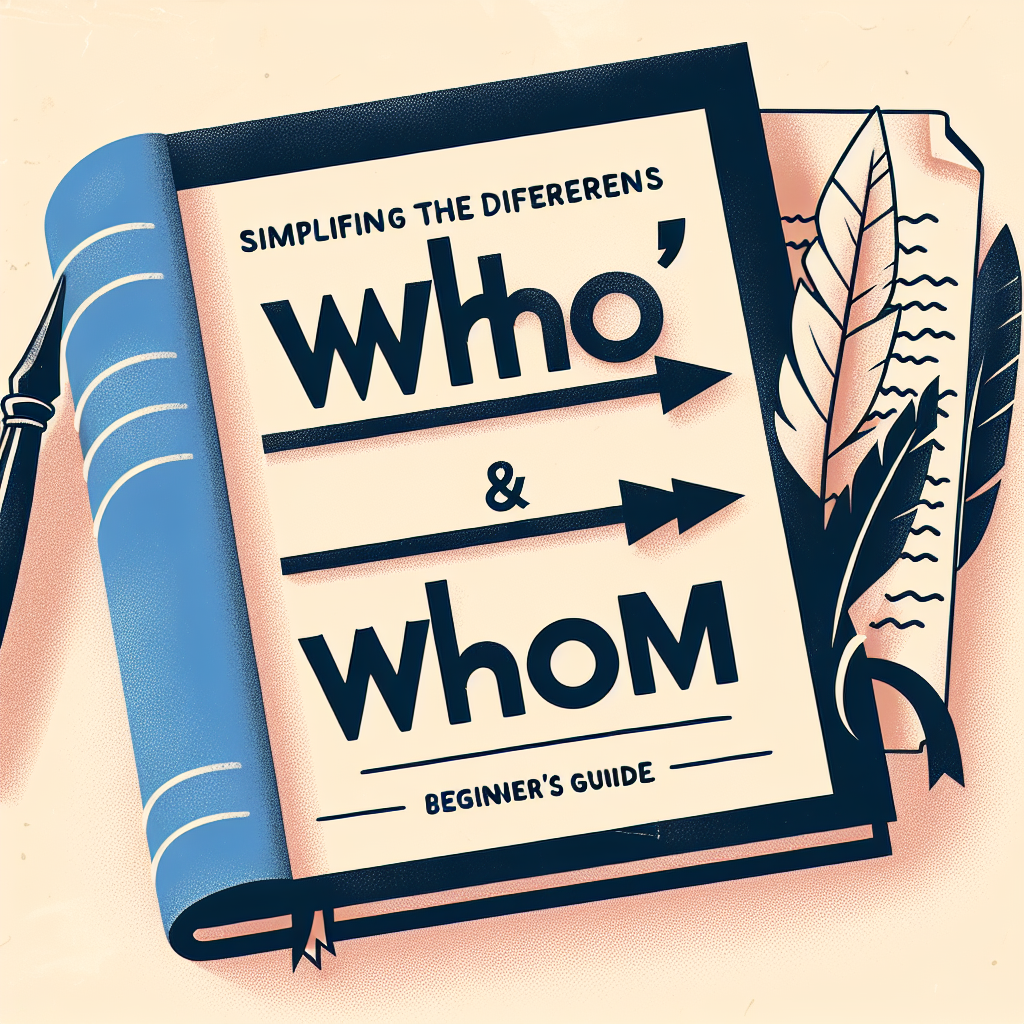Simplifying Who vs Whom: A Beginnerʼs Guide
Understanding the Difference
When faced with the question of who vs whom, many people find themselves in a state of confusion. Who is used when referring to the subject of a sentence, while whom is used when referring to the object. For example, “Who is going to the store?” vs “To whom should I address this letter?”
Using Who
Who is the pronoun to use when referring to the person performing an action. It is often followed by a verb in a sentence. For example, “Who made this delicious meal?” In this sentence, who is the subject of the verb “made.”
Using Whom
Whom is the pronoun to use when referring to the person who is receiving an action. It is often used as the object of a preposition. For example, “To whom did you give the gift?” In this sentence, whom is the object of the preposition “to.”
Common Mistakes
One common mistake that people make is using who in a situation that requires whom. For example, “Who did you invite to the party?” should actually be “Whom did you invite to the party?” Another common mistake is using whom as the subject of a sentence. For example, “Whom is coming to dinner?” should be “Who is coming to dinner?”
Practice Makes Perfect
The best way to master the difference between who and whom is to practice using them in sentences. Start by identifying whether the pronoun is referring to the subject or the object of the sentence. With enough practice, you will become more confident in your ability to choose the correct pronoun.
Seeking Help
If you are still feeling perplexed about who vs whom, don’t hesitate to seek help from a grammar expert or an online resource like EditMojo. They can provide clear explanations and helpful tips to simplify this grammar concept.
Conclusion
In conclusion, understanding who vs whom doesn’t have to be complicated. By practicing and seeking help when needed, you can become more confident in your ability to use these pronouns correctly. Remember, who is for the subject, and whom is for the object. With a little effort, you can simplify this grammar rule and improve your writing skills.
For more grammar tips and tricks, check out EditMojo’s post on common grammar mistakes.
#Simplifying #Beginnerʼs #Guide
